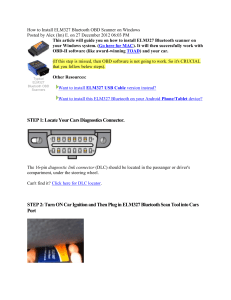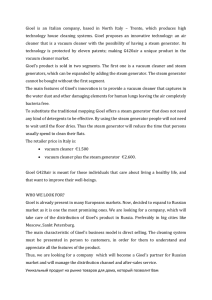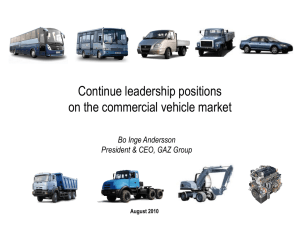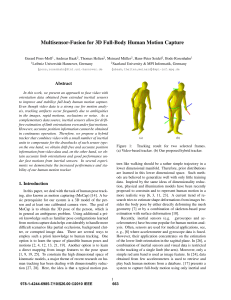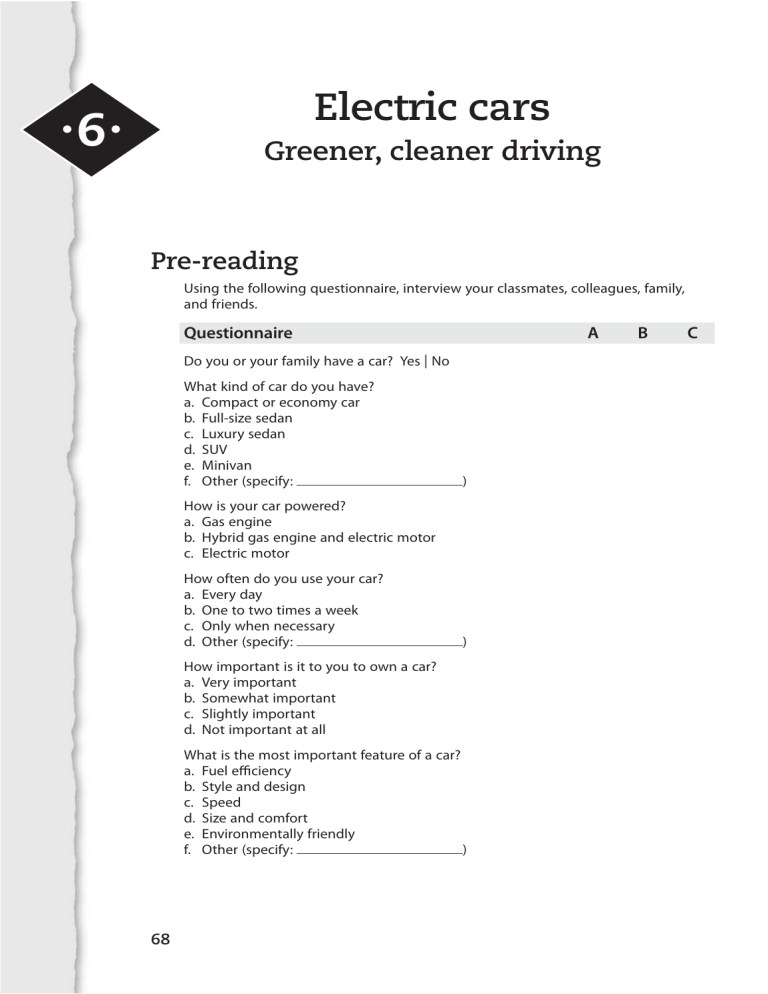
Electric cars ·6· Greener, cleaner driving Pre-reading Using the following questionnaire, interview your classmates, colleagues, family, and friends. Questionnaire A Do you or your family have a car? Yes | No What kind of car do you have? a. Compact or economy car b. Full-size sedan c. Luxury sedan d. SUV e. Minivan f. Other (specify: ) How is your car powered? a. Gas engine b. Hybrid gas engine and electric motor c. Electric motor How often do you use your car? a. Every day b. One to two times a week c. Only when necessary d. Other (specify: ) How important is it to you to own a car? a. Very important b. Somewhat important c. Slightly important d. Not important at all What is the most important feature of a car? a. Fuel efficiency b. Style and design c. Speed d. Size and comfort e. Environmentally friendly ) f. Other (specify: 68 B C Predicting content Read only the first paragraph of the reading text, then make three predictions about the content of the entire text. Reading text 1 Humans and their cars constituted the greatest love affair of the past century. Cars represent freedom, mobility, power, and status. Most people who don’t have a car want one, and those who already own one would like a newer, bigger, faster, and fancier model. When one considers that in the United States the number of vehicles is increasing faster than the population, it looks like the love affair with the automobile has turned into an addiction. U.S. household and vehicle statistics Year No. of households (thousands) No. of registered vehicles (thousands) Total vehicle miles (millions) 1950 1980 2000 2010 43,554 80,776 104,705 117,538 43,501 139,831 213,300 239,812 458,246 1,527,295 2,746,925 2,966,494 source Transportation Energy Data Book: Edition 31, Chapter 8, Office of Energy Efficiency and Renewable Energy, U.S. Department of Energy, 2010. 2 3 Statistics on car ownership are staggering. Between 1950 and 2010, the number of U.S. households nearly tripled, but the number of registered vehicles per household increased by 551 percent and the total miles driven by nearly 650 percent. Even though car sales declined almost 28 percent between 2007 and 2009 due to the global financial crisis, a total of 5.7 million new passenger cars were purchased in 2010. According to the U.S. Department of Energy’s Transportation Energy Data Book, in 2010 there was nearly one vehicle (0.77) per capita, and nearly two vehicles (1.79) per household. In 1960, 2.5 percent of American households owned three or more cars; in 2010, that number had mushroomed to 19.5 percent. Data from the International Organization of Motor Vehicle Manufacturers reports that Japan, the United States, China, and Germany produced a total of 35,654,551 vehicles in 2008, with Japan in the lead at over 11.5 million units. In China, where an estimated 1.6 million cars were sold in 2000, car sales are projected to reach 100 million by 2015. As India and other Asian countries experience increasing economic stability, car ownership is expected to rise on a global scale. Car manufacturing is responsible for one in ten manufacturing jobs, but along with car driving it is one of the biggest contributors to air pollution and global warming. Car manufacturing consumes one half of the world’s oil, and for every gallon of gas burned in an automobile engine, 20 pounds of carbon dioxide (CO2) are released into the atmosphere. Up to the 1960s, when the federal Clean Air Act gave governments in the United States the power to set air quality controls, cars had no pollution control devices whatsoever. Between 1975 and 2011, the carbon footprint for cars shrank by 51.5 percent, but the total output of CO2 continued to grow. In 2008, the U.S. was responsible for 19.34 percent of global CO2 emissions, exceeded only by China, which produced 6,801 million metric tons, and in 2010, CO2 emissions from the U.S. transportation sector was 15 Electric cars: Greener, cleaner driving 69 4 5 6 7 8 percent higher than 1990 levels. In addition to air pollution and greenhouse gases, automobiles have resulted in traffic gridlock, urban sprawl, and the paving of land for highways, roads, and parking lots. If there are one billion cars on the roads by 2030, as predicted, cars will have to change. The quest for cleaner, greener cars in the U.S. has been slow going, and industry efforts have fluctuated with the price and supply of oil. Led by the Big Three—General Motors (GM), Ford, and Chrysler—the American car industry resisted pollution control, shoulder belts and headrests, unleaded gasoline, catalytic converters, and air bags until legislation made them mandatory. However, a mightier impetus for change came with the 1973–74 OPEC oil embargo, when within a few months the price of gasoline skyrocketed from 25 cents a gallon to a dollar and Americans started buying smaller, fuel-efficient Japanese and European cars. The Big Three reacted by turning out lighter economy cars—at least until oil supplies started flowing again and prices stabilized. In 1989, the U.S. Congress banned leaded gasoline, but the state of California, where cities like Los Angeles were choking on automobile exhaust and smog, took an aggressive lead in the battle against air pollution. In 1990, the California Air Resources Board (CARB) stipulated that two percent of all cars sold in California must be zero-emission in 1998, and ten percent in 2003. Only electric cars would meet these requirements.1 While the automobile industry waged an all-out war against CARB’s mandate, GM announced in 1990 that it would build an electric car. In December 1996, the lightweight, aerodynamic, snappy EV1 was introduced for lease only in test markets in California and Arizona. Powered by nickel–metal hydride batteries, EV1s had a driving range of 100 to 120 miles. To recharge the batteries at home, the lessee could use a safe and easy paddle charging system. Between 1996 and 1999, GM built 1,117 electric cars in three generations. Drivers, many of whom were celebrities, were enthusiastic about their EV1s and the car’s fast acceleration and smooth ride. In fact, many would not have been deterred by the EV1’s retail price of $34,995 or the $20,000 to $30,000 replacement cost for the battery pack, but GM decided in 2003 to withdraw the car and crush all but a few, which the company kept or donated to museums. Although GM justified ending the program due to high production costs and lack of economic viability, there is some speculation that GM caved in to pressure from the automobile and oil industries and that the electric car was doomed from the get-go. While GM was developing the EV1, competing carmakers were coming out with their own versions. Their limited driving range, a long recharging time, and the shortage of charging stations made electric vehicles better suited to city driving. The Ford Electric Ranger and the Chevrolet S-10 electric trucks were produced in limited numbers and leased to urban delivery fleets, but a few years later, both models were terminated and destroyed. Consumer-oriented vehicles, like Toyota’s RAV4 EV, Honda’s EV Plus, and the Nissan Altra, also ended up as scrap. In Europe, towns and cities were turning their busy centers into internal combustion engine–free zones, where electric vehicles turned out to be more successful as taxis, small delivery vehicles, buses, rental cars, and city cars. In North America, electric cars just could not make it on the market despite the clear benefits of zero emissions, cheaper operating costs, 90 percent efficiency, and an overall reduced dependency on oil. Naysayers might argue that since the electric car relies on fossil fuel–burning power plants for electricity, they are not so environmentally friendly after all. On the other hand, the Union of Concerned Scientists maintains that it would take 1,440 EVs to produce the CO2 emitted by one conventional automobile. Nevertheless, as long as gas remained cheap and plenti1 From the late 1880s to the turn of the century, electric vehicles had enjoyed popularity in American cities, but after 1910, the internal combustion automobile emerged as the nation’s vehicle of choice, and electric car manufacturers disappeared. 70 practice makes perfect Advanced English Reading and Comprehension 9 10 11 12 ful, drivers who were used to a convenient fill-up at the nearest service station were not ready to trust a car powered by a battery that might run out of juice in the middle of the highway. As a result, the electric car died a premature death. When Toyota launched the Prius in 1997 in Japan, the breakthrough hybrid gas-electric car looked like a best-of-both-worlds solution. There are two types of hybrids: series hybrids, which use a small gasoline or diesel engine to generate the power that drives an electric motor and recharges the battery pack, and parallel hybrids, which can switch between a gasoline engine and an electric motor, depending on the power needed for driving. Electric motors work best for acceleration, while gasoline engines produce a steady speed on the highway. Hybrid cars are light, compact, quiet, and fuel- and energy-efficient, and some shut off automatically when the car is stopped at a traffic light. Conversely, hybrids are more expensive to purchase, service, and maintain, and their high-voltage battery can be dangerous in an accident or fail to charge fully in colder climate conditions. Although hybrids are low in emissions, they still give off greenhouse gases. The Prius has been the front-runner in the hybrid race for market share, and its sales in 70 countries suggest that car buyers are more tuned in to the hybrid’s benefits than its drawbacks. Of course, every other carmaker has been following on Toyota’s heels with its own hybrid sedan, coupe, SUV, pickup, van, and luxury models. Judging by the variety of series and parallel hybrids, including diesel, plug-in, mild, and full hybrids on the market, the hybrid seems to be well on the road to replacing the conventional internal combustion–powered automobile. Ever since Karl Benz built the first modern gasoline-powered automobile in Mannheim, Germany, in 1885, the car has undergone constant metamorphosis. To see how cars keep up with the times, all anyone has to do is attend an annual automobile show or subscribe to an automobile publication. Whereas car manufacturers have been more concerned in the past with styling and performance, they are beginning to focus more on making cleaner and greener cars, which makes one wonder what cars will look like down the road. In 10 or 20 years, will we be driving a new generation of hybrids, or will the electric models make a comeback? Will people be cruising down the highways in cars powered by hydrogen fuel cells, or motoring around town in mini Smart cars? Will cars, at some point, be able to fly? In any case, people are not likely to abandon their cars, even if cities build more efficient, affordable, and environmentally friendly public transportation systems. People’s love affair with the car is still going strong, and if car manufacturers have their way, it will not cool down any time soon. After reading In the Pre-reading section, check to see if your predictions about the reading text were correct. Electric cars: Greener, cleaner driving 71 Vocabulary EXERCISE 6 ·1 Thematic vocabulary List 10 words or phrases related to cars and driving. EXERCISE 6 ·2 Noun Academic vocabulary Using a dictionary, complete the following chart with the correct forms and definitions of the academic words from the reading text. If a word has multiple meanings, match the definition to the context in which the word is used in the text. Adjective Verb 1. stability 2. legislation 3. global 4. X abandon 5. consider 6. consume 7. exceed 8. generate 9. maintain 10. X 11. register terminate 12. contributor, 13. X decline 14. X fluctuate 15. range X 16. vehicle 72 X practice makes perfect Advanced English Reading and Comprehension Definition Noun Adjective Verb 17. device X X 18. version X X 19. X annual X 20. converse(ly) X Definition EXERCISE 6·3 Using vocabulary, part 1 Complete each of the following sentences with the appropriate academic word from the chart in Exercise 6-2. Be sure to use the correct form of each verb and to pluralize nouns, if necessary. 1. We of party leader. our candidate to be the best-qualified person for the position checkup. 2. I have to make an appointment with my doctor for my , because there is so 3. The Internet can be a very useful tool for research. much information out there, you have to differentiate between unreliable and trustworthy websites. 4. When there was no hope of recovery from his illness, the patient decided to his treatment. in recent years. 5. The birthrate in industrialized countries has been 6. A large number of year’s multicultural festival. prepared traditional foods and participated in this it in order to keep it in 7. When you drive a car regularly, you have to good running condition. 8. This store has a wide of excellent digital cameras. warming. 9. All countries should be concerned about 10. The newly elected president promises to restore economic jobs. 11. Industrialized countries and create a large share of the world’s resources. of their most popular 12. Every year, cell phone companies bring out new models to stay competitive. 13. There are too many on the road during rush hour. 14. Hydroelectric dams most of British Columbia’s electricity. 15. Our blood pressure and heart rate activity. 16. The passengers had to , depending on our level of physical the sinking ship. Electric cars: Greener, cleaner driving 73 17. The government has just passed new phones while driving. making it illegal to use cell 18. During takeoff and landing, all passengers on the airplane must turn off their electronic . 19. Prices rise when demand for goods and commodities 20. When you check into the hotel, you have to the supply. at the front desk. EXERCISE 6·4 Nonacademic vocabulary Match each nonacademic word or phrase in column 1 with its definition in column 2. Then, indicate each item’s part of speech (n., v., or adj.). 1. acceleration 2. charge 3. emission 4. exhaust 5. launch 6. mandatory 7. mobility a. b. c. d. e. f. g. h. i. j. specify, require start, initiate speeding up flexibility, movement spreading out gases, waste top up, replenish compulsory, obligatory search, mission discharge, outflow 8. quest 9. sprawl 10. stipulate Reading comprehension EXERCISE 6·5 Reading for main ideas Choose the boldface word or phrase that correctly completes each of the following statements. Some statements include two sets of choices. 1. In the United States, car ownership is increasing | decreasing at a slower | faster rate than the population. 2. Car manufacturing and driving are minor | major sources of air pollution, greenhouse gases, and environmental destruction. 3. The American car industry has been | has not been a leader in developing cleaner, greener cars. 74 practice makes perfect Advanced English Reading and Comprehension 4. The price of oil | Government regulation has had a greater effect on the car industry than the price of oil | government regulation. 5. Electric cars, such as the EV1, were | were not commercial successes in the United States largely due to technical problems | pressure from the automotive and oil industries. 6. Electric cars are | are not more environmentally friendly than internal combustion–powered cars. 7. The electric-gasoline hybrid car has proven | has not proven to be a successful alternative to the internal combustion–powered car. 8. Car manufacturers are becoming more focused on improving performance and styling | making cars more energy-efficient and environmentally friendly. 9. The car is likely | unlikely to disappear from streets and roads in the future. EXERCISE 6·6 Reading for details For each of the following sentences, choose the correct answer to fill in the blank. 1. In 2010, the average household in the United States owned nearly a. one b. two c. three 2. 3. 4. cars. produced the greatest number of cars in 2008. a. The United States b. Germany c. Japan a. One b. Three c. Five a. Ford b. GM c. Chrysler in ten people work(s) in the car manufacturing industry. developed the EV1. . 5. “The Big Three” refers to a. the three most popular car models b. Ford, GM, and Chrysler c. three anti-pollution laws passed by governments in the United States 6. The Prius was developed by a. GM b. Daimler-Benz c. Toyota . Electric cars: Greener, cleaner driving 75 Indicate which of the following statements are true (T) and which are false (F). 7. Before the 1960s, there were no pollution control devices of any kind in cars. 8. The state of California has been a leader in fighting air pollution caused by cars. 9. During the 1973–74 oil embargo, American carmakers continued to make big cars that consumed a lot of gasoline. 10. GM decided to destroy its fleet of EV1s, because no one was interested in buying or driving them. 11. Electric cars have been more popular in Europe than in North America. 12. Hybrid cars are cheaper to produce and maintain than conventional automobiles. Answer the following questions in complete sentences. 13. What effect did the 1973–74 oil embargo have on American carmakers? 14. What was the 1990 CARB mandate, and what was its effect? 15. What is the difference between a series hybrid and a parallel hybrid? 16. What are four advantages of electric cars? 17. What are five advantages of hybrid cars? 76 practice makes perfect Advanced English Reading and Comprehension EXERCISE 6 ·7 Reading for interpretation and inference Choose the correct interpretation for each of the following statements from the reading text. Pay special attention to the boldface words and phrases. 1. “. . . it looks like the love affair with the automobile has turned into an addiction.” a. People can live without their cars. b. People can’t live without their cars. 2. “. . . there is some speculation that GM caved in to pressure from the automobile and oil industries. . . .” a. GM lost the most money in the automobile and oil industry. b. GM stopped its EV1 program, because the automobile and oil industry didn’t support electric cars. 3. “. . . the electric car was doomed from the get-go.” a. There was no hope of success for the electric car from the beginning. b. The electric car project got off to a bad start. 4. “Statistics on car ownership are staggering.” a. Statistics fluctuate. b. Statistics are shocking. 5. “. . . cities like Los Angeles were choking on automobile exhaust and smog. . . .” a. Los Angeles had a serious air pollution problem. b. Los Angeles couldn’t solve its air pollution problem. 6. “While the automobile industry waged an all-out war against the CARB mandate, GM announced in 1990 that it would build an electric car.” a. The automobile industry did everything in its power to fight the CARB mandate. b. The automobile industry protested the CARB mandate. 7. “In North America, electric cars just could not make it on the market despite the clear benefits of zero emissions, cheaper operating costs, 90 percent efficiency, and an overall reduced dependency on oil.” a. Electric cars were not produced in North America. b. Electric cars did not sell well in North America. 8. “As a result, the electric car died a premature death.” a. The electric car was an immediate failure. b. The electric car was stopped before it had a chance to develop. 9. “When Toyota launched the Prius in 1997 in Japan, the breakthrough hybrid gas-electric car looked like a best-of-both-worlds solution.” a. The hybrid car was an ideal compromise. b. The hybrid car was popular in both North America and Japan. 10. “. . . car buyers are more tuned in to the hybrid’s benefits than its drawbacks.” a. Car buyers prefer hybrids to other cars. b. Car buyers are more aware of the advantages. Electric cars: Greener, cleaner driving 77 Reading strategies Paraphrasing To summarize a reading text, you don’t have to quote all the facts and figures. Instead, to show that you understand what these numbers mean, you can restate them; that is, you can get the general idea across without referring to the actual numbers. You can do this by • converting percentages to fractions, and vice versa • using the descriptive verbs, adjectives, and adverbs in the following chart to describe a trend Verbs that indicate an increase grow, rise, increase, climb, surge, swell, explode, skyrocket Verbs that indicate a decrease fall, decline, decrease, lower, drop, dwindle, sink, plummet, plunge Verbs that indicate stability remain, stay, hold steady, stagnate, linger, show no change, level off, freeze Verbs that indicate a combination of increases and decreases fluctuate, change, vary, shift, waver, go up and down, seesaw Adjectives and adverbs that indicate a mathematical change by ½ by 2 by 3 by 4 by more half double / two times triple / three times quadruple / four times five/ten/twenty times fivefold / tenfold Adjectives and adverbs that indicate a large change sharp(ly), steep(ly), dramatic(ally), significant(ly), measurable (measurably), exponential(ly), sudden(ly), major Adjectives and adverbs that indicate stability steady (steadily), constant(ly), consistent(ly), continuous(ly), progressive(ly), regular(ly) Adjectives and adverbs that indicate a small change gradual(ly), slow(ly), incremental(ly), little by little, minor, limited Adjectives and adverbs that indicate very little change minimal(ly), marginal(ly), nominal(ly), negligible (negligibly), barely, hardly Here are some examples: QUOTATION CONVERSION USING DESCRIPTIVE WORDS 78 “Costs have risen by 98 percent.” Costs have almost doubled. Costs have risen dramatically/significantly. practice makes perfect Advanced English Reading and Comprehension EXERCISE 6·8 Restating facts and figures Paraphrase each of the following statements from the reading text, restating the facts and figures. 1. “Between 1950 and 2010, the number of U.S. households nearly tripled, but the number of registered vehicles per household increased by 551 percent and the total miles driven by nearly 650 percent.” 2. “In 1960, 2.5 percent of American households owned three or more cars; in 2010, that number had mushroomed to 19.5 percent.” 3. “Data from the International Organization of Motor Vehicle Manufacturers reports that Japan, the United States, China, and Germany produced a total of 35,654,551 vehicles in 2008, with Japan in the lead at over 11.5 million units. In China, where an estimated 1.6 million cars were sold in 2000, car sales are projected to reach 100 million by 2015.” 4. “. . . in 2010, CO2 emissions from the U.S. transportation sector was 15 percent higher than 1990 levels.” 5. “. . . within a few months the price of gasoline skyrocketed from 25 cents a gallon to a dollar. . . .” 6. “In 1990, the California Air Resources Board (CARB) stipulated that two percent of all cars sold in California must be zero-emission in 1998, and ten percent in 2003.” 7. “Powered by nickel–metal hydride batteries, EV1s had a driving range of 100 to 120 miles.” Electric cars: Greener, cleaner driving 79 8. “On the other hand, the Union of Concerned Scientists maintains that it would take 1,440 EVs to produce the CO2 emitted by one conventional automobile.” Now, scan other reading texts for facts and figures, and apply what you have learned in this exercise to restate them. Critical thinking EXERCISE 6·9 Making evaluations Paragraph 6 of the reading text states that many of the people, or lessors, who leased the EV1 would have bought one. Indicate which of the following statements would have been a reason to buy (✓) or not to buy (X) an EV1. Give reasons to support your answers. 1. The EV1 was cute and stylish. 2. The EV1 was different from other cars. 3. The EV1 drove and handled well. 4. The EV1 was environmentally friendly. 5. The EV1 was safe, reliable, and cheaper to run. 6. The lessors were rich and could afford the price. 7. The lessors preferred a small car. 8. The lessors didn’t have to do a lot of long-distance driving. EXERCISE 6 · 10 Making a case For each of the following types of cars, list the pros and cons regarding the car’s popularity ten years from now. Type of car Pros Gasoline-powered 80 practice makes perfect Advanced English Reading and Comprehension Cons Gasoline-electric hybrid Electric Hydrogen fuel cell–powered Bibliography Brain, Marshall, “How Electric Cars Work” (How Stuff Works), http://auto.howstuffworks.com/ electric-car.htm. Cogan, Ron, “20 Truths about the GM EV1 Electric Car” (Green Car, 2008), http://www.greencar .com/articles/20-truths-gm-ev1-electric-car.php. Davis, Stacy C., Susan W. Diegel, and Robert G. Boundy, Transportation Energy Data Book: Edition 31 (Office of Energy Efficiency and Renewable Energy, U.S. Department of Energy, July 2012), http://cta.ornl.gov/data/index.shtml. Motavalli, Jim, Forward Drive: The Race to Build “Clean” Cars for the Future (San Francisco: Sierra Club Books, 2000). Electric cars: Greener, cleaner driving 81



